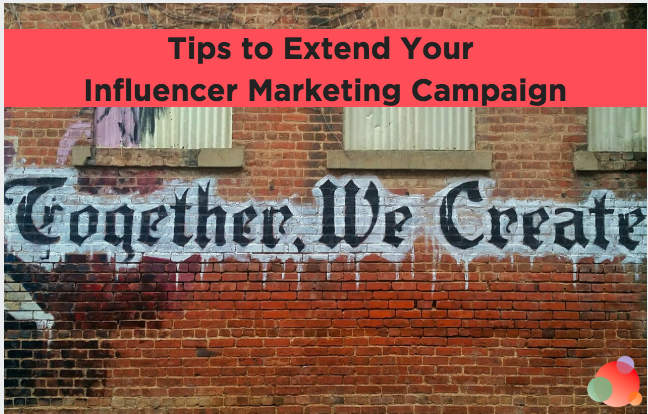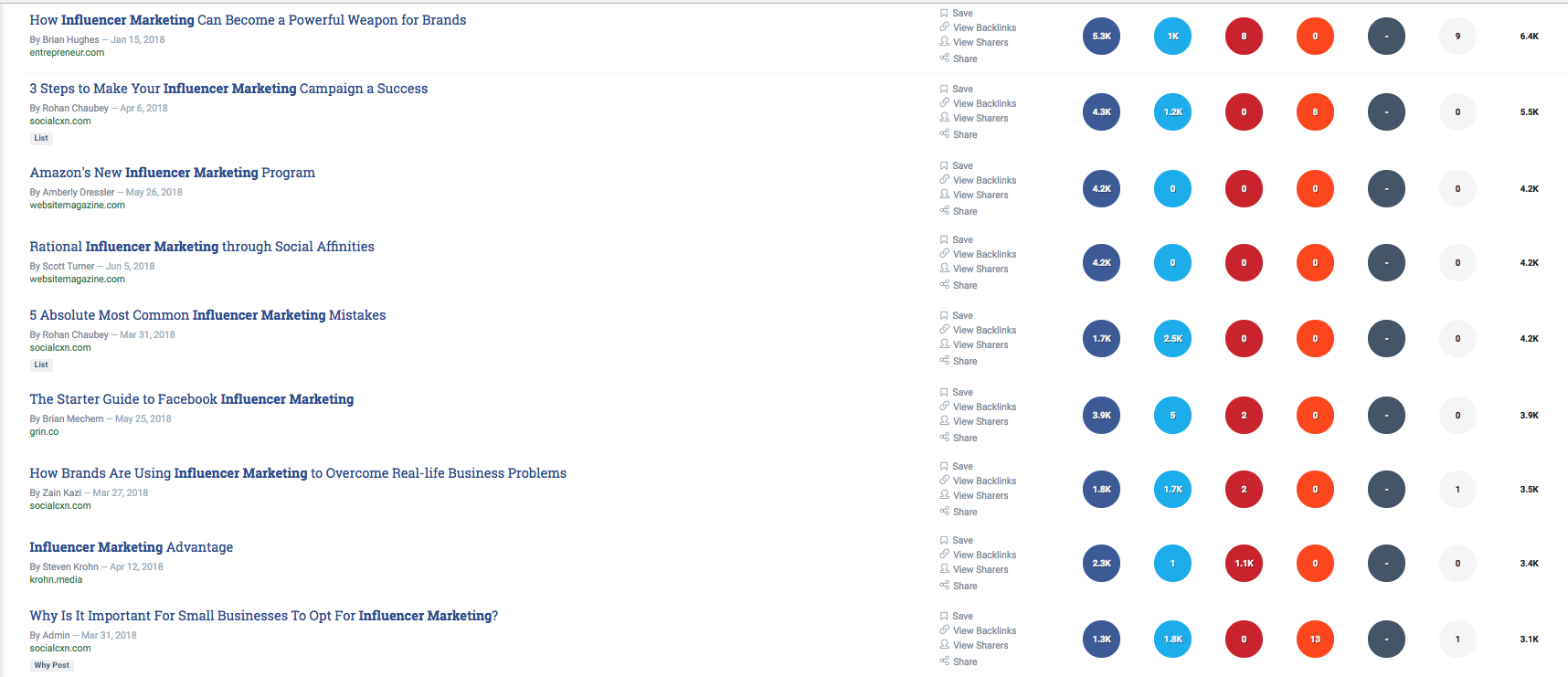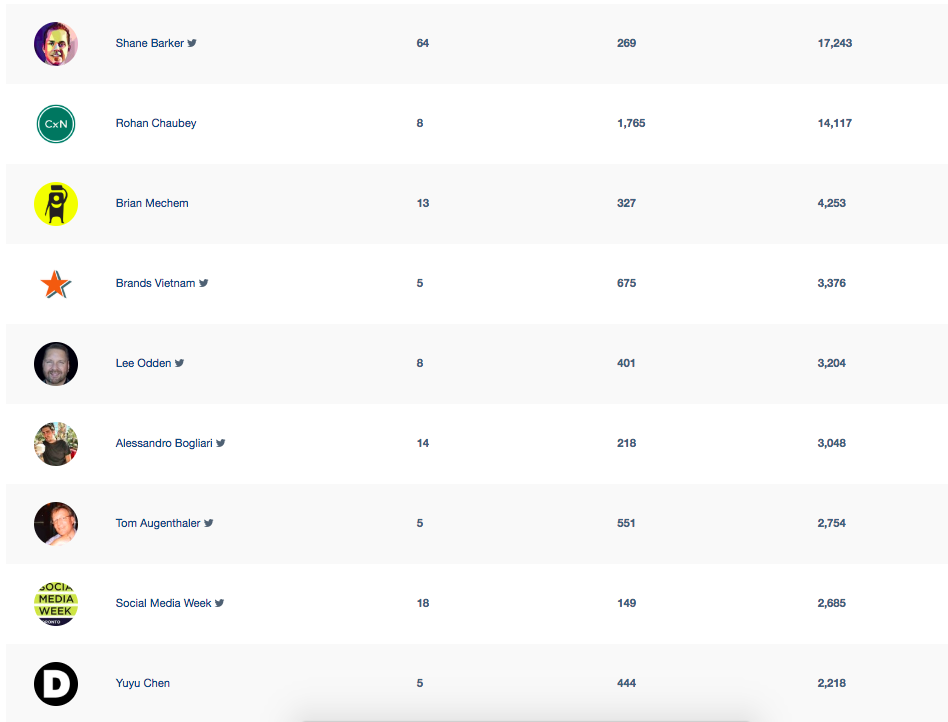 Yesterday I wrote an article titled, The Good, the Bad, and the Ugly of Influencer Marketing.
Yesterday I wrote an article titled, The Good, the Bad, and the Ugly of Influencer Marketing.
In it, I talked about the influencer marketing fraud that includes fake followers and fake engagement.
I also worked with Aliza Freud from SheSpeaks to combine some tips in there about how to spot the fraud and what to do about it.
This is something artificial intelligence and machine learning cannot do. It takes a human touch.
If you missed it yesterday, pop over there and give it a quick read.
(Or a quick skim, as The Guardian points out this week.)
I’ll wait.
Influencers Extend Beyond Awareness
After that article ran, my friend Greg Mischio sent me an influencer marketing article he had just written.
In it, he provides 10 ways to work with real influencers, including meeting face-to-face, making them your mentor, promote their wares, and more.
It’s a great read—and really well done. I recommend you add it to your compilation of influencer marketing done well.
Not to outdo him, rather to add to what he started, there are a few other ways to do influencer marketing in new and interesting ways.
Not only will they help you generate sales, they’ll help you increase your domain authority, build your search rankings, and gain new subscribers.
Here are five things to consider adding to your influencer marketing arsenal.
Influencers on Social Media
First, open Buzzsumo.
You are allowed a few searches for free, if you don’t have an account.
But it’s one of those tools you’ll use time and again so it’s totally worth going pro (and I get nothing for saying that, other than your undying love for introducing you to them).
It’s $79/month, which is only $2.60 a day. What do you already spend $3 a day on that doesn’t help you do your job?
(I’ll answer that. Starbucks.)
To be totally meta, we’ll use influencer marketing in this example.
Do a search in the content analyzer and leave the “total engagements” tab clicked.

Just this year, alone, you can see who the bloggers/journalists are that have written about the topic—and have lots of social shares.
The free version gives you 10 results, while the pro membership gives you more than 400.
Depending on what you’re trying to do, 10 might be perfect.
Of course, some of them are the same—Entrepreneur, Social CXN, and Website Magazine write about it quite a bit—which makes it pretty easy to put together a top 10 or top 25 list of influencers to target.
Then I can flip over to the “influencers” tab and choose my influencers.
For the topic “influencer marketing,” it’s the usual suspects: Ann Handley, Joe Pulizzi, Jay Baer, yours truly.
Now I can do two things:
- Pitch influencer marketing content to the top 10 or top 25 media list I crafted (make sure there is anchor text and a link back to your site); and
- Share it on social and tag some of the influencers.
Influencers Who Blog
Now I want to follow the same process to find the most relevant bloggers for my influencer marketing campaign.
Flip over to the “top authors” tab and enter your search term.

While some of these results are the same as the influencers I found, there are some new ones, too.
It also gives me their average engagement numbers on the topic—and I can view their top content.
Now you can create a list to add to the two above. This one is for contributed content on blogs.
You may already have relationships with some of the bloggers. Start there.
Then offer to write a guest post for them on the topic (again make sure you have anchor text and a link to your site).
Become an Influencer
Now, let’s say you want to be known for the topic you are working on.
Add those keywords to your social media profiles. If I didn’t show up for influencer marketing, I might add those to my social media profiles.
But don’t add them as hashtags. Do them as actual words/phrases. You don’t want people to click the hashtag and leave your profile.
Influencer Marketing Lists
Now, using the social networks where you already participate, create lists to help you with influencer marketing.
- On Twitter, create a list of bloggers and journalists you want to collaborate with this year. This will make it easy to follow them, share their work, and start conversations (which lead to relationships).
- In a document, create a list of books and podcasts you want to review. Every author and podcaster needs reviews and ratings to gain more traction. Every one of them will be appreciative of the work you do there…and likely will be willing to do something for you in return.
- On LinkedIn, create tags—such as “influencer,” “blogger,” “journalist,” or “super cool kid” so you can easily follow what they post.
- On Feedly, create a list of bloggers to watch. Then, any time they publish new content, it shows up in your list and makes it super easy for you to share.
Quid Pro Quo
The thing about social media is it is very much “you scratch my back and I’ll scratch yours.”
Influencer marketing is no different.
There are two interesting ways for you to scratch the backs of the influencers who can help you in return.
- Expert Roundup. The Orbit Media team does “6 Questions for 6 Experts.” Heidi Cohen is the master at this, sometimes including up to 100 influencers. And, of course, we do this with The Big Question every Friday.
- More Buzzsumo. Go back to Buzzsumo and search where your content performs—and thank those people. Click over to the “backlinks” tab and insert the URL for your content. In this case, I’ll use an influencer marketing article that Kristen Matthews guest authored for us in June. In this case, it’s only two, which actually makes my job really easy. I can thank them or share something of theirs, in return.

It’s Not Brain Surgery
These ideas certainly aren’t brain surgery, but they do give you lots of starting places for influencer marketing.
Now I leave it to you. What tools do you use in influencer relations that you can share?
Photo by “My Life Through A Lens” on Unsplash